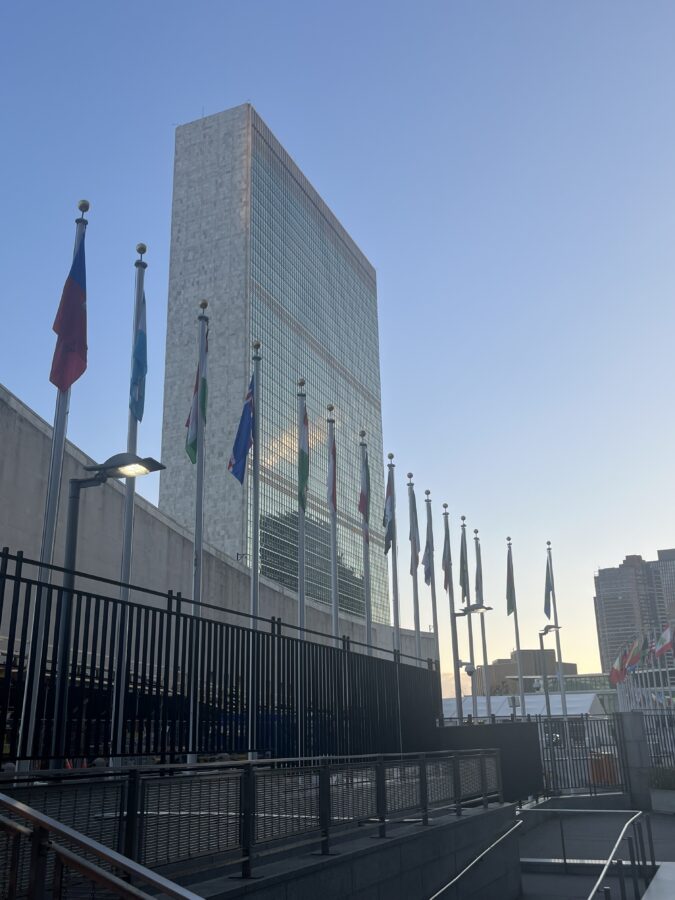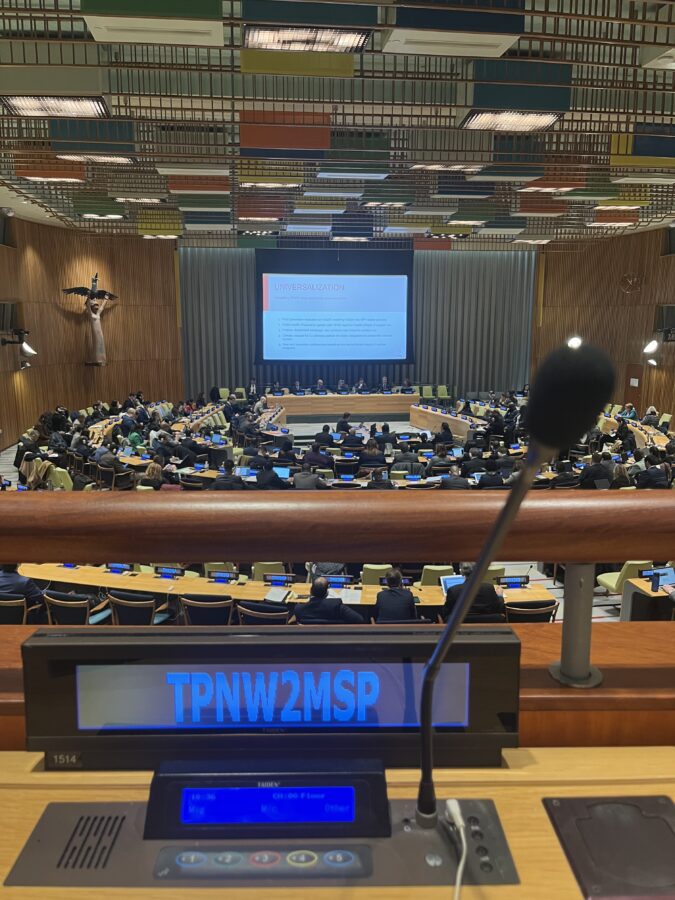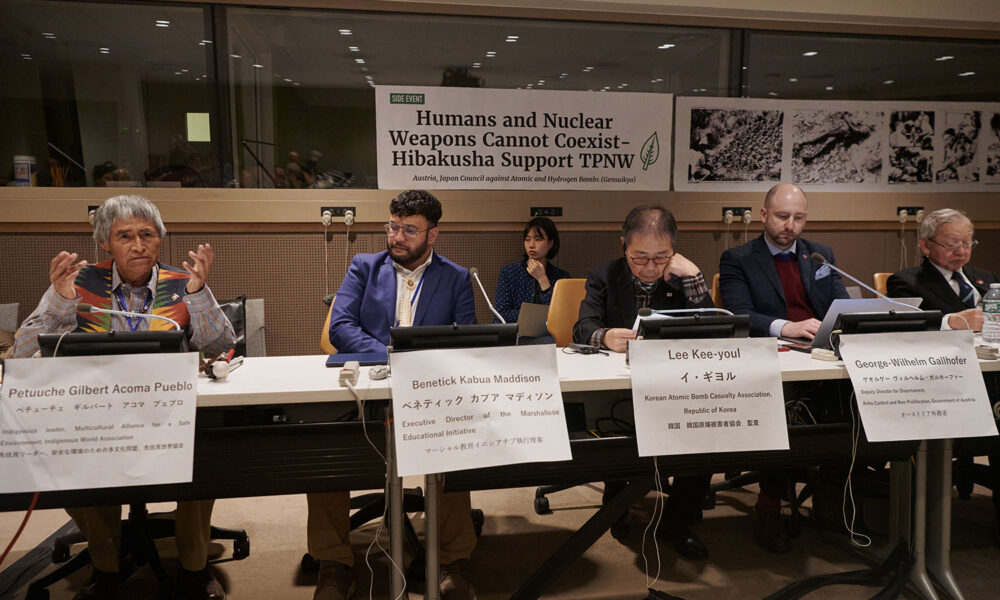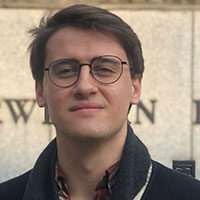During the week of November 27th, under a cloud of international conflict and unease, delegates, politicians, activists and academics convened for the Second Meeting of States Parties (2MSP) to the Treaty on the Prohibition of Nuclear Weapons (TPNW) at the UN Headquarters in New York. Attendees came together to examine the global state of disarmament and harm-reduction work and call for more states to sign the nuclear ban treaty and join the stand against nuclear weapons.
The TPNW is a broad coalition of nation states committed to building that framework through changing attitudes toward and the culture around nuclear weapons; currently, there are 93 signatories and 69 states parties. Unsurprisingly, none of the five nuclear-weapon states recognized by the Nuclear Non-Proliferation Treaty (United States, Russia, China, United Kingdom, and France) have signed, and only seven of 38 OECD countries (Austria, Chile, Colombia, Costa Rica, Ireland, Mexico, and New Zealand) have signed or ratified. Clearly, this is a movement by those who have less to demand better behavior from those who have more. Nuclear weapons harm and threaten the many for the benefit of the few; the many are working to end that.
Speaking at a session on the treaty’s obligations within victim assistance and remediation, Governor Hidehiko Yuzaki of Hiroshima made a key point about the way we think about security. Nuclear deterrence, he said, is an idea become dogma, not a hard truth; relying on it for security locks us into a system with inherent massive risks. We must stop thinking of security in these “narrow nationalistic frames”, and work to build a “collective, sustainable security framework.”

Voices from the frontline
The most important participants at the 2MSP were members of frontline communities directly impacted by mining, bombing, testing and storage across the world. The hibakusha, survivors of the atomic bombings of Hiroshima and Nagasaki, have experienced the horrors of nuclear weapons like no one else. The 2MSP heard how post-war US secrecy around the atomic bomb fostered significant discrimination towards hibakusha in Japan. Indeed, victim testimony at the museums dedicated to the bombings in Hiroshima and Nagasaki describes how US scientists and military personnel arrived to test and observe the bomb’s impact on the local environment, including its inhabitants.
That dehumanization and disregard for human life was also central in nuclear testing across the world. Just as they are among the first and most seriously impacted by the effects of climate change, indigenous communities have historically been on the front lines of nuclear testing and uranium mining. Speaking at the 2MSP, Karina Lester, who is from the Anangu Pitjantjatjara Yankunytjatjara Lands (APY Lands) in the far Northwest of South Australia, spoke of her father and grandmother’s experiences of British nuclear testing in the area. She described how her father heard the ground shake and felt the “black smoke” move over their lands. The TPNW, she said, must continue to center the voices of those who have experienced the harm of nuclear weapons; the weapons must be made illegal, but governments must also work with those impacted to redress the harm caused.
The TPNW should act as both a forum and a tool for those countries and communities who have been harmed. Powerful states have to respect the sovereignty of smaller states, honor their obligations through international treaties and respect the decisions of multilateral organizations. They have a history of failing to do so.
For example, discussing the work towards a nuclear-free Pacific, one speaker pointed out that after Christmas Island (Kiribas) was selected as a site for the United Kingdom’s nuclear testing, Samoa, which was a trust territory of New Zealand at the time, petitioned the UN Trusteeship Council to halt the 1957 test, but the United Kingdom did not listen. Indeed, examination of British military reports prior to the test show racist attitudes that were callously dismissive of harm to local “primitive” populations. The United Kingdom, United States and France saw the Pacific and Australia as “empty space”, erasing local populations entirely.
Unfortunately, the Pacific is still treated as a strategic asset by powerful nations today, and the multilateral steps taken by the region to protect itself from nuclear weapons continue to be undermined. The Treaty of Rarotonga, which includes 13 regional parties, entered into force in 1986 and established the South Pacific Nuclear-Free Zone. It has also been fully signed and ratified by France and the United Kingdom, while Russia and China have only ratified the two of the three protocols that apply to them. The United States has not yet ratified any of the protocols.
While the United States stated that its practices were “not inconsistent with the treaty,” it said it would not accept any limitations on the right of passage for its nuclear aircraft or ships in the region. As one participant pointed out, this, in addition to the US policy of neither confirming nor denying the presence of nuclear weapons onboard its ships and aircraft, is another example of a nuclear-weapon state prioritizing its own weapons over international agreements or local authority and needs. Now, geopolitical competition between the US and China is heating up, and the region must worry about renewed militarization and the question of whether its nuclear weapons-free zone will be respected.

Forgetting the taboo?
At a panel on the nuclear taboo, panelists touched on the idea of “nuclear forgetting.” We lived under the specter of nuclear war for so long, they said, yet modern policies and geopolitical developments suggest that the lessons and experiences of the Cold War may have reached their expiration date. Tensions and risks were not lowered and averted during the Cold War through military buildups and aggression, but through dialogue and compromise.
The dogmatic obsession with nuclear deterrence did not make the world safer during the Cold War, nor will it now. The common security framework that Governor Yuzaki spoke of is achievable; however, it requires the rejection of the idea that there is no alternative to nuclear deterrence. The more non-nuclear weapons states organize and agitate, the more possible it becomes.
And while the war in Ukraine has led to global unease as Russian leaders have resorted to nuclear posturing and threats, Nina Tannenwald, originator of the “nuclear taboo” theory, pointed out that those threats have drawn pushback and criticism not only from the United States and its allies but also from China and India.
Opposition to nuclear weapons and nuclear threats unites states that might otherwise be divided ideologically or strategically. While some have speculated on whether the “nuclear taboo” might be on the ropes, there is still a broad international consensus against possessing or using nuclear weapons. As the delegate from New Zealand pointed out, the TPNW is an important part of the global majority coming together to reinforce that norm. And as the experiences of frontline communities show, that norm is in need of reinforcement. There was and is a taboo against nuclear use, but it clearly did not extend to exposing those living in so-called “empty spaces” to explosive tests.
Building a safer future
Nuclear weapons are, and always have been, the pinnacle of autocracy. From the beginning, their development and testing has completely disregarded the already marginalized, in the belief that certain people, environments and communities simply matter less than others.
That continues today, as a few world leaders wield an extreme destructive power over the global majority. At the United Nations, we heard testimonies on the importance of building broad, inclusive cultural change from the bottom up. States parties have already committed to creating a trust fund for environmental remediation and victim assistance, and will present a concrete plan on the feasibility and guidelines on such a fund at the third MSP. The goal, Karina Lester said, is making these weapons illegal, but the treaty also obliges states parties to work to “make things better” for those who have suffered in the past.
Nuclear-weapon states all oppose further nuclear proliferation, yet, as the delegate from South Africa argued, adherence to the deterrence doctrine actually encourages other states to proliferate. That is why it is in every state’s interest to build a collective security framework that does not rely on isolated nationalism.
It is easy to assume that nuclear-weapon states will not interact with or simply ignore the consensus built by the TPNW. But there is strength in numbers and eventually, nuclear-weapon states may be forced to reckon with it. While speaking of positive steps forward, one hibakusha mentioned that he has always wanted the United States to apologize for using nuclear weapons against Japan. It would set an extremely important precedent, he said, for the non-use of nuclear weapons. It is extremely important for nuclear-weapon states to take these kinds of meaningful steps toward acknowledging the harm these weapons have caused.
Hopefully the TPNW can continue to grow as a forum for the global majority to resist the nuclear autocracy of nuclear weapons states. And maybe the steady growth of this important forum for resistance against nuclear autocracy can get us closer to the big goal: a nuclear weapons-free future.

